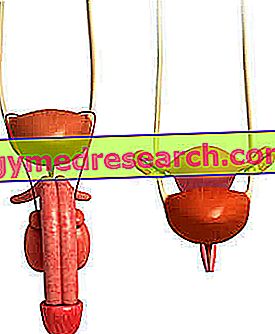Related articles: Keratoconus
Definition
Keratoconus is an eye disease that causes thinning and protrusion towards the outside of the cornea. It is a slow and progressive process that usually begins during adolescence and adulthood. The cone shape assumed by the cornea modifies its refractive power and does not allow the correct passage of the light input towards the internal ocular structures.
The cause of keratoconus is not yet known. However, the intervention of a specific genetic alteration has been hypothesized, from which an imbalance in the corneal layers would derive, with effects on the thickness and resistance capacity of the same.
Keratoconus can present itself in an isolated form or associated with other pathologies (including retinitis pigmentosa and Down syndrome). The deformation of the cornea can affect one or both eyes, although the symptoms on one side can be significantly worse than the other.
Most common symptoms and signs *
- Eye fatigue
- Burning eyes
- Night Blindness
- Conjunctivitis
- Ocular pain
- Fotofobia
- Tearing
- Headache
- Eyes reddened
- Corneal opacity
- Reduced vision
- Double vision
- Blurred vision
Further indications
Keratoconus causes significant changes in vision. The direct consequence of corneal bulging is astigmatism (called irregular as it is not possible to correct with the lenses). Keratoconus can also be associated with myopia and, rarely, hypermetropia. Therefore, the initial symptoms are related to these refractive defects.
Keratoconus is a disease that typically requires frequent changes in the prescription of glasses. As the condition progresses, vision becomes progressively more blurred and distorted, increases sensitivity to light and eye irritation. Sometimes keratoconus causes edema and corneal scarring. The presence of scar tissue on the corneal surface causes the loss of its homogeneity and transparency; as a result, an opacity may occur that significantly reduces eyesight.
The keratoconus is diagnosed with corneal topography, pachymetry (measuring the thickness of the cornea) and confocal microscopy (it allows the observation of all the layers of the cornea and identifies any fragility). The corneal topography, in particular, allows to evaluate the conformation of the cornea, study its surface and monitor the evolution of the disease.
In the case of keratoconus, corneal cross-linking can be used, a treatment that involves the creation of links between the stromal collagen fibers. In the most serious cases, corneal transplantation is used (mandatory if perforation has occurred).



